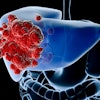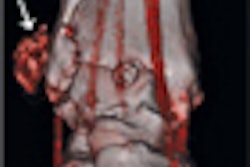The risk of bloodstream infections such as bacteremia leading to endocarditis is extremely low in virtual colonoscopy (also known as CT colonography or CTC). Infection rates are probably even lower than in conventional colonoscopy, say researchers from Ireland, the U.K., and the U.S.
"This all began with a clinical dilemma in 2005 in which a 68-year-old patient presented with fever and malaise over a two-month period," said Dr. Carole Ridge from St. Vincent's University Hospital in Dublin. "The patient had recently had colonoscopy which was incomplete ... and was referred for CTC, which was unremarkable."
However, when the patient subsequently presented with fever and malaise, he underwent an epicardiogram and blood tests that confirmed infective endocarditis, an infection of the heart lining -- and usually of previously damaged heart valves, as well -- that can develop when bacteria enter the bloodstream.
"This raises two clinical questions. First, is there significant bacteremia associated with CTC, and, if so, is antibiotic prophylaxis warranted prior to CTC?" Ridge said in a presentation at the 2010 European Congress of Radiology (ECR).
A literature search found one small 1996 study by O'Hare and colleagues, who analyzed blood cultures following virtual colonoscopy and found no significant bacteremia, she said. Next, a search of related exams including conventional colonoscopy and barium enema revealed infection at rates of 0% to 4.9% and 0% to 3%, respectively, Ridge said.
There are no guidelines recommending antibiotic prophylaxis prior to CTC, or prior to conventional colonoscopy, for that matter, she said.
"The risks of CTC are few, and there are a few common adverse events, including nausea and vasovagal reactions [0.002%]," she said. "Potentially serious adverse events are very rare and include colonic perforation [0.005%] and angina," she said.
Ridge and colleagues suggested two proposed methods by which bacteremia might occur that apply to both CTC and barium enema:
- Insertion of the rectal tube and inflation of the rectal balloon, which could potentially cause mucosal injury.
- Increased pressures due to insufflation that could cause transient colonic ischemia and transfer of enteric pathogens to the colonic mucosa.
Their study aimed to assess the prevalence of bacteremia in a cohort of 100 average-risk virtual colonoscopy screening patients who had not received antibiotics for at least two weeks prior to the exam.
In their study, Ridge and colleagues from University College London and the University of Texas in Houston examined 100 average-risk patients (38 men, 62 women; mean age, 64 years) who underwent screening virtual colonoscopy following standard bowel preparation and colonic insufflation with a pressure-regulated CO2 pump (24-French rectal tube).
Patients with heart disease, colitis, or other existing gastrointestinal conditions were excluded. Blood samples were aspirated from an intravenous cannula at five, 10, and 15 minutes after CTC using an aseptic technique, Ridge said. Samples were cultured in aerobic and anaerobic media for five days.
Of the 100 patients examined between 2007 and 2009, 16 had positive blood cultures including skin contaminants, coagulase-negative staphylococcus, and propionum. No fecal enteric organisms were identified.
One patient developed retroperitoneal free air; bacteremia was not demonstrated in this patient. Based on 95% confidence intervals around extreme results, the lower and upper limits of the possible bacteremia rate as a result of CTC are 0% to 3.7%.
"The rate of bacteremia in CTC is extremely low, with ... no cases identified in 100 patients," Ridge said. "We estimated using the Wilson's score method that the true rate of bacteremia was less than 3%."
According to American Heart Association (AHA) guidelines, antibiotic prophylaxis is not recommended for invasive colonoscopy, she said.
"The risk of bacteremia due to enteric pathogens during lower GI endoscopy is acceptably low, ranging from 0% to 4.9% -- so by extension antibiotic prophylaxis is definitely not recommended for CTC because the risk of bacteremia and of infective endocarditis is acceptably low."
By Eric Barnes
AuntMinnie.com staff writer
March 31, 2010
Related Reading
Colon stenting no barrier to virtual colonoscopy, January 27, 2010
New ACR guidelines overhaul VC practice, training standards, November 27, 2009
Older age linked to colonoscopic perforation, October 7, 2009
VC finds perforations from incomplete colonoscopy, October 24, 2008
Copyright © 2010 AuntMinnie.com



















